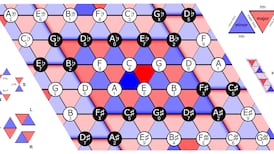Natural light or artificial? Music or no music? Classes before lunch or classes after?
Creating an ideal environment for learning in the classroom was the challenge tackled by three transition year students from St Woolstan’s Community School in Kildare.
"We wanted to find the ideal conditions for learning, " explained Eimear Delaney, 16.
She and Emily Thomas, 15, and Aimee Finegan, 16, decided to look at eight variables to see which were most likely to contribute to the learning process in a group of 75 first class pupils attending three different schools.
They presented their findings at the BT Young Scientist and Technology Exhibition underway at the RDS.
The results of the surveys and also tests to assess successful learning outcomes proved somewhat variable, says Emily.
They tested pupils from mixed and from single sex schools and found that what worked in an all boys school might not be matched in the mixed or all girls school.
Patterns did emerge however says Aimee. "The ideal would be to have natural light and music playing but music without lyrics."
They found that learning was not inhibited by music provided it was not too strong and not too loud.
Having classes after lunch and after PE were both found to work against learning so they suggested that classes held after these times should be kept to a minimum.
They also tested first class students from their own school to look at study conditions at home and test outcomes. Once again working in natural light and having low key music playing both worked in favour of faster learning.











